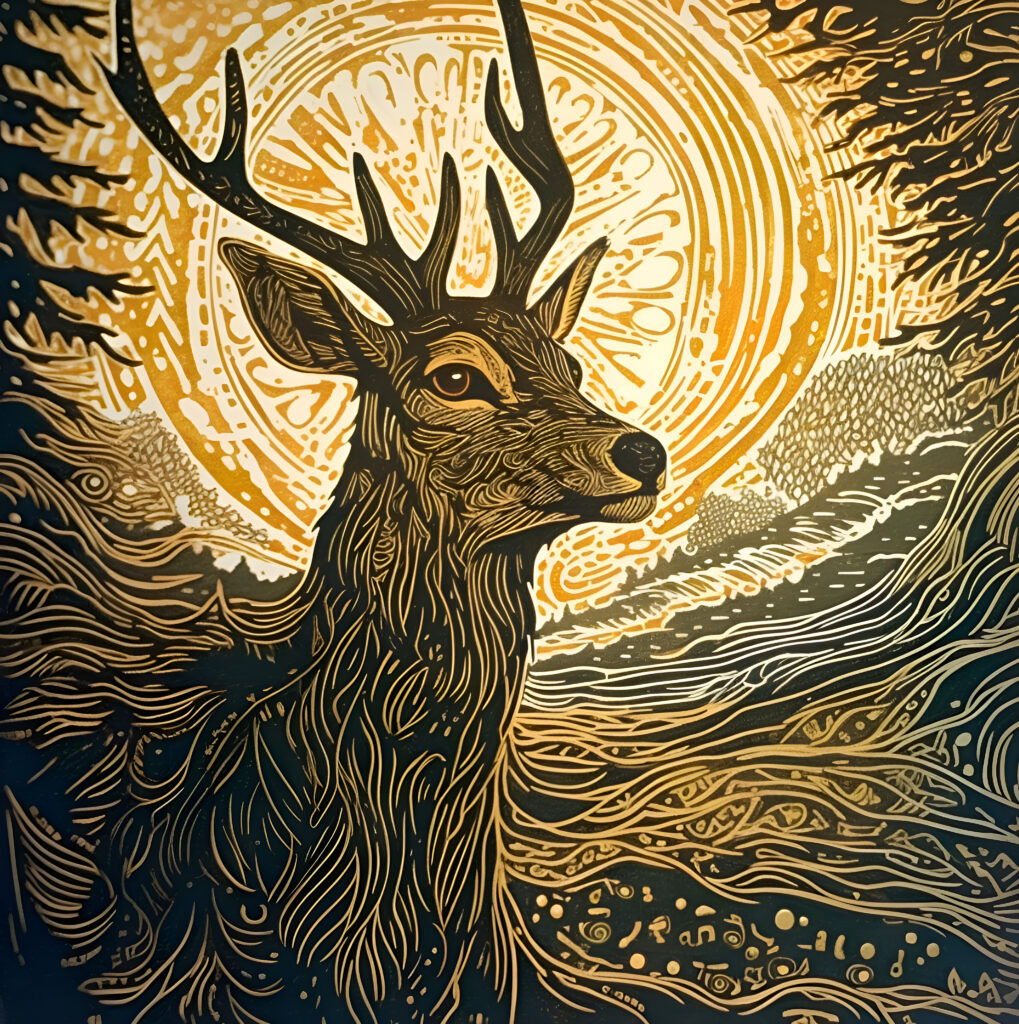From my seat on the patio, I hear them falling—green cannonballs crashing through branches, pounding the earth with dull thuds. The Black Walnuts have begun their autumn offering.
These native giants bloom in spring with cascades of delicate green tendrils. By late summer, their fruits swell heavy on the branches, waiting for the right moment to drop. When they fall, the forest floor becomes a battlefield of scattered green orbs, each one a treasure wrapped in layers of resistance.
The animals know. Squirrels arrive first, their teeth sharp enough for the task. Raccoons follow at dusk, their nimble fingers working the hulls. Skunks waddle through at night, patient as monks. Even foxes pause to gnaw at the bounty. Each nut holds winter’s promise—dense with fat, protein, and the calories needed to survive the cold months ahead.
But nature guards its gifts.
What falls is armored in a thick green husk that must soften over time before yielding to pressure. Beneath lies a substance so potent it was once used to dye cloth permanently black. Watch the squirrels closely—their muzzles wear dark beards this time of year, marked by the walnut’s dye. Children who handle these hulls carry the stain for days; no amount of scrubbing removes it. Then comes the shell itself—irregular and stubborn—defying nutcrackers and keeping this rich meat from grocery shelves.
The Black Walnut shapes more than meals. Its roots release juglone into the soil, a chemical whisper that says not here to Eastern White Pines and other competitors. In my childhood woods of New England, pines often dominate. But here, in this Pennsylvania valley, the story changes. Pines cling to the ridges, where thin soil offers refuge from the walnut’s reach. The valley floor belongs to these dark-barked giants.
Beneath their branches, a different world flourishes. Black-eyed Susans lift their faces to dappled light. Columbine nods on delicate stems. Ferns unfurl in the shade. Wild ginger creeps along the forest floor. Virginia creeper climbs toward the canopy. These plants have made peace with juglone, thriving where others cannot.
Come autumn’s first cool breath, walnut leaves turn brilliant yellow. They spiral down in the wind like a thousand suns, carpeting the earth in gold. The forest’s architecture becomes visible—trunks rising from yellow snow where no competition for canopy light grows, their consequence clear.
Each thing in this world exists because of another’s consequence.
Ferns rise from soil enriched by fallen walnut leaves. Stream lilies bloom where walnut chemistry permits. Porcupine tracks in snow trace paths to winter food. The trees themselves spread because squirrels forget where they buried their cache. Fox kits grow fat on squirrels grown fat on walnuts.
You exist through consequence too—your ancestors’ choices, the food that built your bones, the community that shaped your mind.
Look deeper still.
These trees stand here only through millennia of evolution—through ancient battles with pines for light, through soil enriched by countless deaths, through water that has circled this planet since its birth: falling as rain, flowing in streams, rising as mist. Through starlight traveling vast distances to quicken chlorophyll. Through the exhaled breath of every living thing.
Remove any thread, and the tree vanishes.
This truth extends beyond simple cause and effect. Unity runs deeper than our minds can grasp. Language fails. Mathematics falls short. What remains of our mothers and fathers—our grandmothers and grandfathers beyond counting—illuminates this moment in ways we cannot name. All things shape each other. Nothing can be added. Nothing removed. Only this luminous river remains—endlessly combining, dissolving, recombining. Ever-changing. Ever-still.
Words cannot describe this unified mind. I can only drop them on the page like these Black Walnuts falling to earth.
Wait for the hard husk to soften and rot in the autumn rain.
Stain your fingers black prying the husk away.
Risk broken teeth or bent hammers cracking the nutshell.
Persist.
Light waits within.
